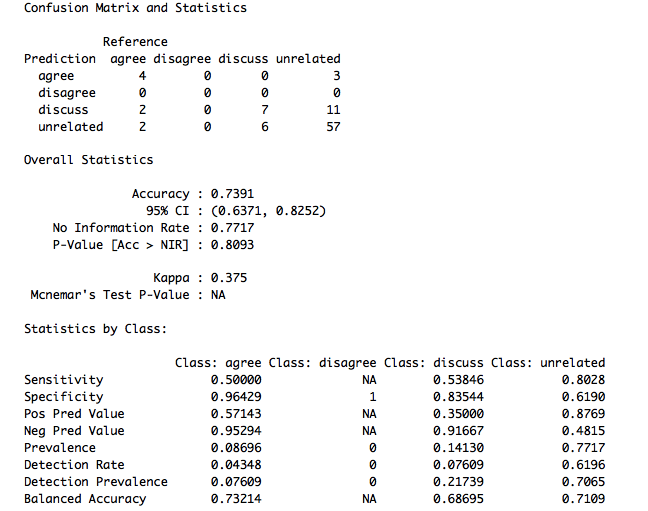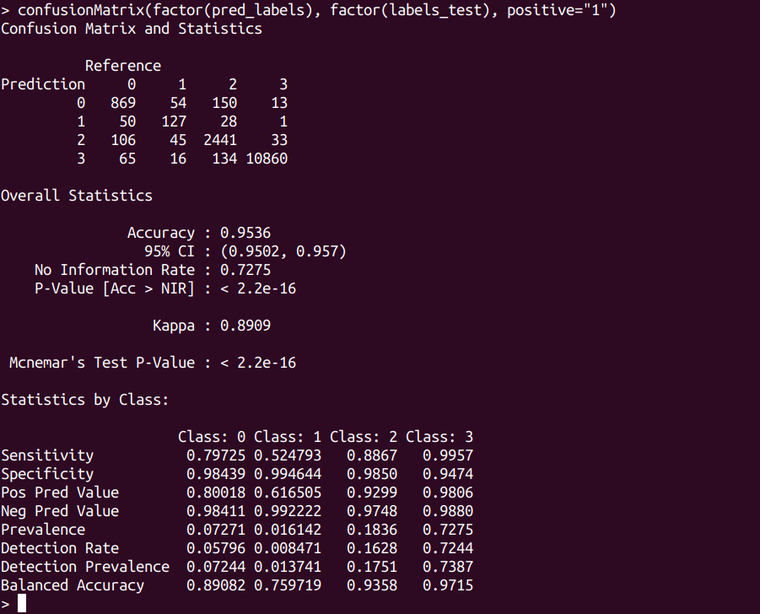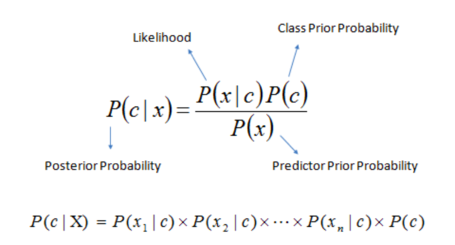Difference between revisions of "Supervised Machine Learning for Fake News Detection"
Adelo Vieira (talk | contribs) (Created page with "==Introduction== <br /> ==Chapter 1 - Project proposal== <br /> ==Chapter 2 - Training a Supervised Machine Learning Model for fake news detection== Supervised text Classif...") |
Adelo Vieira (talk | contribs) (→Results for the Kaggle fake news dataset) |
||
| Line 211: | Line 211: | ||
<br /> | <br /> | ||
| − | |||
| − | |||
| − | |||
| − | |||
| − | |||
| − | |||
| − | |||
| − | |||
| − | |||
| − | |||
| − | |||
| − | |||
| − | |||
| − | |||
| − | |||
| − | |||
| − | |||
| − | |||
| − | |||
| − | |||
| − | |||
| − | |||
| − | |||
| − | |||
| − | |||
| − | |||
| − | |||
| − | |||
| − | |||
| − | |||
| − | |||
| − | |||
| − | |||
| − | |||
| − | |||
| − | |||
| − | |||
| − | |||
| − | |||
| − | |||
| − | |||
| − | |||
| − | |||
| − | |||
| − | |||
| − | |||
| − | |||
| − | |||
| − | |||
| − | |||
| − | |||
| − | |||
| − | |||
| − | |||
| − | |||
| − | |||
| − | |||
| − | |||
| − | |||
| − | |||
| − | |||
| − | |||
| − | |||
| − | |||
| − | |||
====Results for the Fake news challenge dataset==== | ====Results for the Fake news challenge dataset==== | ||
Revision as of 16:39, 27 April 2019
Contents
- 1 Introduction
- 2 Chapter 1 - Project proposal
- 3 Chapter 2 - Training a Supervised Machine Learning Model for fake news detection
- 3.1 Procedure
- 3.2 Evaluation
- 3.3 Results
- 3.4 Datasets used
- 3.5 Algorithms
- 4 Gofaaas Fake News detector Web App
- 5 Conclusion
Introduction
Chapter 1 - Project proposal
Chapter 2 - Training a Supervised Machine Learning Model for fake news detection
Supervised text Classification for fake news detection Using Machine Learning Models
Procedure
Evaluation
We evaluate our approach in different settings. First, weperform cross-validation on our noisy training set; second,and more importantly, we train models on the training setand validate them against a manually created gold standard.17Moreover, we evaluate two variants, i.e., including and exclud-ing user features. [smb:home/adelo/1-system/1-disco_local/1-mis_archivos/1-pe/1-ciencia/1-computacion/2-data_analysis-machine_learning/gofaaaz-machine_learning/5-References/7-Weakly_supervised_searning_for_fake_news_detection_on_twitter.pdf]
Results
Summary of Results
| Algorithms | Author | Package | Keyword | Accuracy | Running time for the entire data | |||||||
|---|---|---|---|---|---|---|---|---|---|---|---|---|
| Kaggle fake news dataset | Fake news challenge dataset | Fake news Detector dataset | Using a GoogleCloud VM: 64 vCPUs, 240 GB memory (Ubuntu 18.04) | |||||||||
| 1000 rows | The entire data:
20,800 rows |
1000 rows | The entire data: 49,972 rows |
1000 rows | The entire data: |
Kaggle fake news dataset | Fake news challenge dataset | Fake news Detector dataset | ||||
| Naive Bayes | Bayes, Thomas | We used RTextTools, which depends on e1071 | NB* | |||||||||
| Support vector machine | Meyer et al., 2012 | We used RTextTools, which depends on e1071 | SVM* | |||||||||
| Random forest | Liawand Wiener, 2002 | We used RTextTools, which depends on randomForest | RF | |||||||||
| General linearized models | Friedman et al., 2010 | We used RTextTools, which depends on wglmnet | GLMNET* | |||||||||
| Maximum entropy | Jurka, 2012 | We used RTextTools, which depends on maxent | MAXENT* | |||||||||
| Extreme Gradient Boosting | Chen & Guestrin, 2016 | xgboost | XGBOOST* | |||||||||
| Classification or regression tree | Ripley., 2012 | We used RTextTools, which depends on tree | TREE | |||||||||
| Boosting | Tuszynski, 2012 | We used RTextTools, which depends on caTools | BOOSTING | |||||||||
| Neural networks | Venables and Ripley, 2002 | We used RTextTools, which depends on | NNET | |||||||||
| Bagging | Peters and Hothorn, 2012 | We used RTextTools, which depends on ipred | BAGGING** | |||||||||
| Scaled linear discriminant analysis | Peters and Hothorn, 2012 | We used RTextTools, which depends on ipred | SLDA** | |||||||||
| * Low-memory algorithm
** Very high-memory algorithm | ||||||||||||
Results for the Fake news challenge dataset
Using a portion of the dataset - 1000 rows
Using GLMNET
Using SVM
Using SVM
Using MAXENT
Using TREE
Using RF
Using BOOSTING
Using NNET
Using Naive Bayes
Using the entire dataset - 50000 rows
Datasets used
Kaggle fake news competition
https://www.kaggle.com/c/fake-news/data
Description of the Kaggle fake news dataset
Fake news Challenge
http://www.fakenewschallenge.org/
Exploring how artificial intelligence technologies could be leveraged to combat fake news.
Formal Definition
- Input: A headline and a body text - either from the same news article or from two different articles.
- Output: Classify the stance of the body text relative to the claim made in the headline into one of four categories:
- Agrees: The body text agrees with the headline.
- Disagrees: The body text disagrees with the headline.
- Discusses: The body text discuss the same topic as the headline, but does not take a position
- Unrelated: The body text discusses a different topic than the headline
Winner team
First place - Team SOLAT in the SWEN
https://github.com/Cisco-Talos/fnc-1
The data provided is (headline, body, stance) instances, where stance is one of {unrelated, discuss, agree, disagree}. The dataset is provided as two CSVs:
- train_bodies.csv : This file contains the body text of articles (the articleBody column) with corresponding IDs (Body ID)
- train_stances.csv : This file contains the labeled stances (the Stance column) for pairs of article headlines (Headline) and article bodies (Body ID, referring to entries in train_bodies.csv).
Description of the Fake news challenge dataset
The Stance Detection dataset for FNC1 can be fount at: https://github.com/FakeNewsChallenge/fnc-1
Distribution of the data
The distribution of Stance classes in train_stances.csv is as follows:
| rows | unrelated | discuss | agree | disagree |
|---|---|---|---|---|
| 49972 | 0.73131 | 0.17828 | 0.0736012 | 0.0168094 |
Description of the Fake news Detector dataset
Algorithms
General linearized models
Support vector machine
Maximum entropy
Classification or regression tree
Random forest
Boosting
Neural networks
Extreme Gradient Boosting
The XGBoost R package
XGBoost - Extreme Gradient Boosting:
- https://xgboost.readthedocs.io/en/latest/
- https://cran.r-project.org/web/packages/xgboost/index.html
Naive Bayes
Naïve Bayes is based on the Bayesian theorem, there in order to understand Naïve Bayes it is important to first understand the Bayesian theorem.
Bayesian theorem is a mathematical formula for determining conditional probability which is the probability of something, happening given that something else has already occurred.
- P(c|x) is the posterior probability of class (target) given predictor (attribute).
- P(c) is the prior probability of class.
- P(x|c) is the likelihood which is the probability of predictor given class.
- P(x) is the prior probability of predictor.
Prior probability, in Bayesian statistical inference, is the probability of an event before new data is collected.
Posterior probability is the revised probability of an event occurring after taking into consideration new information.
In statistical terms, the posterior probability is the probability of event A occurring given that event B has occurred.
The RTextTools package
RTextTools - A Supervised Learning Package for Text Classification:
- https://journal.r-project.org/archive/2013/RJ-2013-001/RJ-2013-001.pdf
- http://www.rtexttools.com/
- https://cran.r-project.org/web/packages/RTextTools/index.html
Gofaaas Fake News detector Web App
Conclusion




























